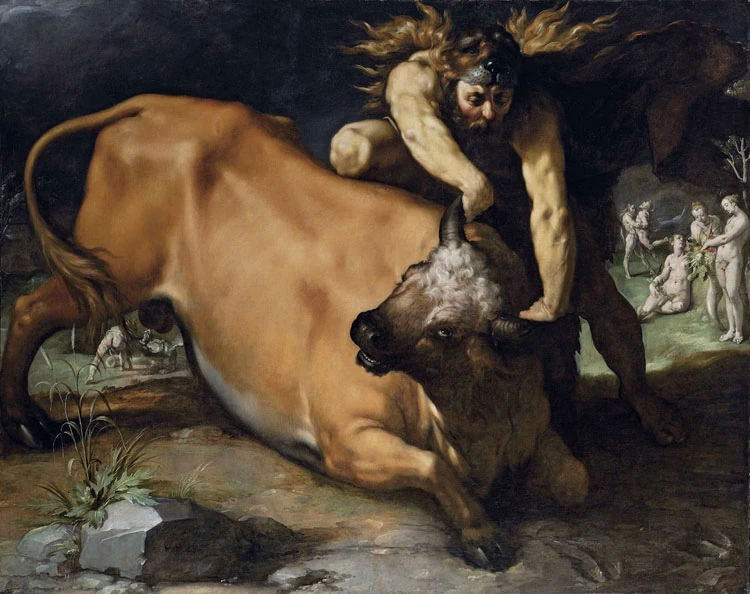Cornelis van Haarlem, Hercules and Achelous, 1590
Cornelis Cornelisz van Haarlem (1562-1638) was a painter of the Dutch Golden Age and a leader of Northern Mannerism. Born in Haarlem, he studied in Antwerp. He was very influenced by Italian Mannerism and Baroque as well as Northern painters like Bartholomeus Spranger. He became a celebrated portrait painter, but today is best known for his mythological and religious paintings. Cornelis often created paintings with heightened drama and elaborate narrative. Hercules and Achelous was one of his most Baroque paintings, containing rather stark chiaroscuro. Achelous was the spirit of the Achelous River, the largest river in Greece, therefore he is the chief river deity. An extremely ancient deity, his worship predates most of the Greek pantheon. Achelous was sometimes considered the source of all fresh water in the world, and by extension all nourishment. He appeared in many forms—a powerful bull, a man with the tail of a sea serpent, a snake of gleaming colors, a young or elderly man with a beard that produced a continuous stream of water. Achelous was a suitor of the princess Deianeira, but Hercules also sought her and when they fought, Achelous was defeated by Hercules. Cornelis shows several episodes of the story at once. The center shows Achelous in his bull form, with Hercules, in his traditional lion-skin cloak, wrestling him to the ground, about to break off one of his horns. Hercules gave the horn to the Naiads who transformed it into the cornucopia, depicted at the far right. The painting also shows Achelous in two other forms, for he transformed throughout the fight. To the left, just under he bull's tail and haunches, we see Hercules facing the god in his serpent form, although it is hard to make out exactly what is happening. These details are easier to discern in this larger (but distorted) version. To the right, in between the large Hercules and the Naiads, we see the conclusion of the fight. Hercules wins by brute strength, lifting and crushing Achelous, now appearing as a man, in his arms. This painting has beautiful texturing, such as the musculature of the two central figures and the shining scales of Achelous's serpent tail. We also see Cornelis's skill with high drama, choosing the moment just before the important breaking of the horn as his central incident.

No comments:
Post a Comment